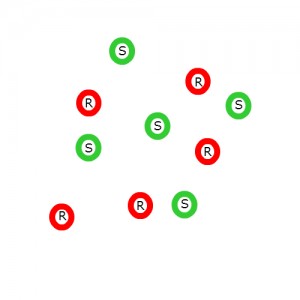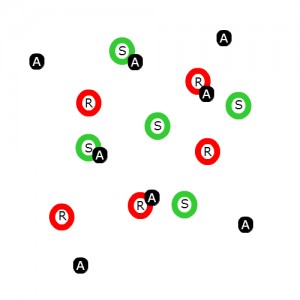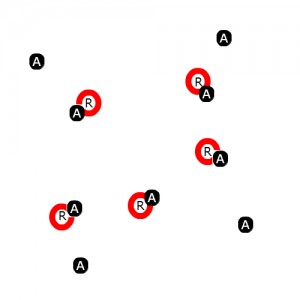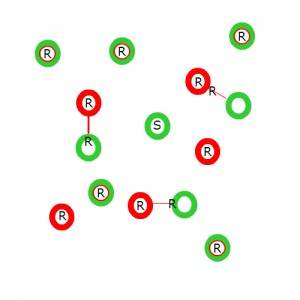If you question five pigeon breeders on antibiotic usage you will most likely get five different answers. In most pigeon catalogs there are countless pages of antibiotic products ranging from broad spectrum “kill everything” antibiotics to antibiotics specific for certain bacteria or narrow spectrum antiobiotics. This article, however, is not about which antibiotics to use or why to use them, but rather a less talked about subject, the mechanism of antibiotic resistance.
First, we must understand the basics of antibiotics. Antibiotics kill bacteria in a number of different ways, but the most common methods are based on the cell wall of bacteria. You may have heard of gram positive or gram negative bacteria, these classifications are based on the constituents of the cell walls and the ability of certain microscopy stains to penetrate the wall. Nature is competitive, so bacteria and fungi have naturally figured out how to produce antibiotics to kill the competition using these cell wall properties. Humans have taken these natural antibiotics and have found ways to produce them in larger quantities allowing for greater dosages and higher toxicity. Everyone is familiar with the antibiotic penicillin, this antibiotic is produced naturally by the Penicillium fungi.
Secondly, we must understand genetic mutation. Genetic mutations happen at random with the great majority causing no positive or negative effect. In a pigeon, a frill, a crest, muffed feet, etc. are all genetic mutations. All show pigeons have phenotypic genetic mutations that have been selected for. However, genetic mutations that do not show a visible change (phentotype) are present, but obviously much harder to recognize. Mutations like these can change the cell wall or its constituents and cause a change in the protein or genetic material that is the target of an antibiotic leaving the antibiotic ineffective. Furthermore, some of these genes can be transferred and integrated into otherwise antibiotic susceptible bacteria, leading to a greater number of bacteria with the resistant genes. I have produced a series of images to better simplify the concept, I will explain what is happening in each.
1. This image represents a group of the same bacteria in an infection. The red and green does not differentiate the type of bacteria, but only the genetic mutations. The green (S) portion represents cells where the genetic material in its natural state and SUSCEPTIBLE to the antibiotic. The red (R) portion represents cells where mutations have occurred resulting it to be more RESISTANT to the antibiotic.
2.This second image shows the introduction of antibiotics (A) into the blood stream. Higher dosages would of course mean more (A)’s in the blood stream. This image shows the antibiotic attaching to the cell wall of the bacteria. On the susceptible (green) bacteria, the antibiotic is punching a hole in the cell well causing the bacteria to spill its internals and die. In the resistant (red) bacteria, the antibiotic simply attached but genetic mutations have strengthened the wall so a hole cannot be punched into it as efficiently.
3.In this third image, all of susceptible bacteria have been eliminated. Since the portion with genetic mutations (red) is usually very small, the pigeon at this stage is more likely starting to improve its condition and look healthier and more active. This stage, however, can be misleading. Many pigeon fanciers will stop dosing their birds at this stage because of visible improvements even though there are still bacteria present with a higher antibiotic resistance. In most cases, following the manufacturers DOSAGES for the entire LENGTH of the treatment will eliminate these more resistant bacteria because they have not had the time to make multiple adaptations to their new found resistance.
4.This fourth image is representative of a pigeon fancier who stopped the antibiotic treatment early (see image 3). The pigeon is visibly healthy at this point, and it appears that the antibiotic treatment did its job. However, because treatment was ended early, the resistant (red) bacteria are still alive in very small numbers. These bacteria have survived the antibiotic treatment and now want to share the secret of surviving (genetic material) with other bacteria. They form a bridge with the bacteria that are susceptible (green) and transfers these genes to them in a process called bacterial conjugation resulting in horizontal gene transfer. After the genes are transferred to the susceptible (green) bacteria, they incorporate it into their own genetic material resulting in the susceptible bacteria gaining resistance to the antibiotic (green with red core). Now, if the same pigeon lives in poor loft conditions, is exposed to a pathogen or has a weak immune system, the bacteria will take over once again causing infection. This time around, however, the bacteria has the resistance gene and the antibiotic will be ineffective in the treatment of this infection.
Notes
-The majority of antibiotics are for bacteria and do not treat viruses, fungi, or parasites.
-According to the CDC, at least 2 million people in the USA acquire serious infections with multiple drug resistant (MDR) pathogens resulting in at least 23,000 deaths.
-Always use the most narrow spectrum antibiotic available if you know the pathogen to be treated.
-Besides increased pathogen resistance, improper and overuse of antibiotics can cause organ damage in the pigeons. Because negative effects of antibiotic overuse may accumulate over time it is often missed by those who only fly the young bird season.
-There are always good bacteria present in the body and when treating for infection these may be killed along with the pathogen. Candida (thrush-fungi) and Trichomoniasis (canker-parasite) can easily take over when normal flora (good bacteria) is removed and is often a sign of antibiotic use.
-Probiotics are bacteria and can be killed by the antibiotics. Therefore, it is best to give probiotics following an antibiotic regime not during.
-Antibiotics may react with chemicals in the water, supplements or minerals in the grit, it is best to not use them during treatment.





